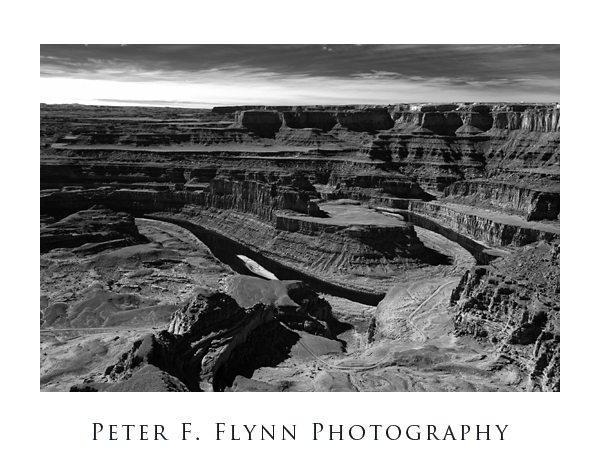Mesa Arch is located in the Island in the Sky district of Canyonlands NP. The arch is accessible via a short, relatively flat 0.5 mile hike from the parking lot adjacent to SR313. The parking lot is near the junction of roads leading northwest to Upheavel Dome and south towards Grand View Point Overlook, about ten miles inside the park on SR313. Mesa Arch is easily one of the most photographed natural arches in the world. Based on our three or four visits to the arch, I’d estimate that your mean time alone here is perhaps two minutes – no kidding. If you want to photograph Mesa Arch without also including your fellow beings (who are posing for their own photos), you have to be patient and act fast. The classic image is of the arch at dawn, with light streaming in from underneath. There are hundreds of virtually identical images posted on the web. All quite serviceable, but nevertheless subtle variations on a single theme. Unlike the many relatively smooth forms found in Arches NP, Mesa Arch has a distinctly rough surface, and this is what I wanted to emphasize in this set of images.
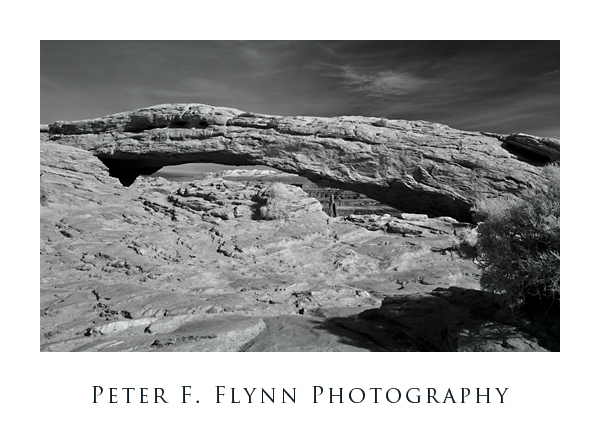 The IR image above, looking west through the arch to the La Sal Mountains and Shafer Basin was recorded on February 15, 2009 at around 15:00 MST using the Nikon D200IR (see the March 6, 2009 entry for details) and the AF-S DX Zoom NIKKOR 12-24mm f/4 IF-ED lens at 18mm. Exposure was f/16 at 1/20s, ISO 100.
The IR image above, looking west through the arch to the La Sal Mountains and Shafer Basin was recorded on February 15, 2009 at around 15:00 MST using the Nikon D200IR (see the March 6, 2009 entry for details) and the AF-S DX Zoom NIKKOR 12-24mm f/4 IF-ED lens at 18mm. Exposure was f/16 at 1/20s, ISO 100.
The arch is perched on the edge of the mesa, overlooking Buck Canyon about 1000 feet below. As I’ve mentioned in a previous entry, if arches earned their name from their function, this one would be named ‘walked-on arch’.
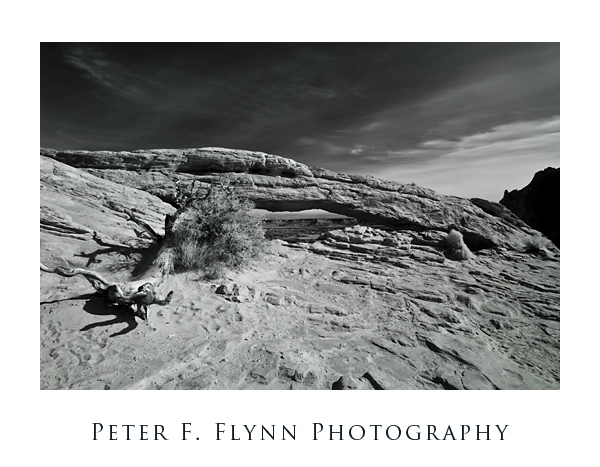 The image above; looking west-southwest, was recorded using the Nikon D200IR and the AF-S DX Zoom NIKKOR 12-24mm f/4 IF-ED lens at 12mm. Exposure was f/16 at 1/25s, ISO 100. The image below is identical the one shown above, apart from application of a coffee tone. Toning was applied using Nik Silver Efex Pro. I am partial to the coffee-toned image, but wonder whether it might be over-the-top. Comments appreciated.
The image above; looking west-southwest, was recorded using the Nikon D200IR and the AF-S DX Zoom NIKKOR 12-24mm f/4 IF-ED lens at 12mm. Exposure was f/16 at 1/25s, ISO 100. The image below is identical the one shown above, apart from application of a coffee tone. Toning was applied using Nik Silver Efex Pro. I am partial to the coffee-toned image, but wonder whether it might be over-the-top. Comments appreciated.
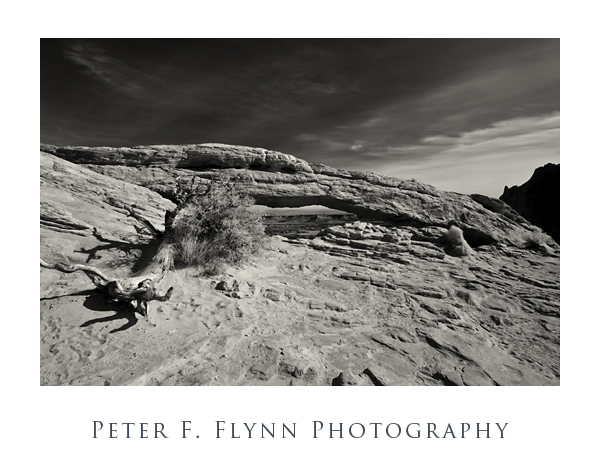
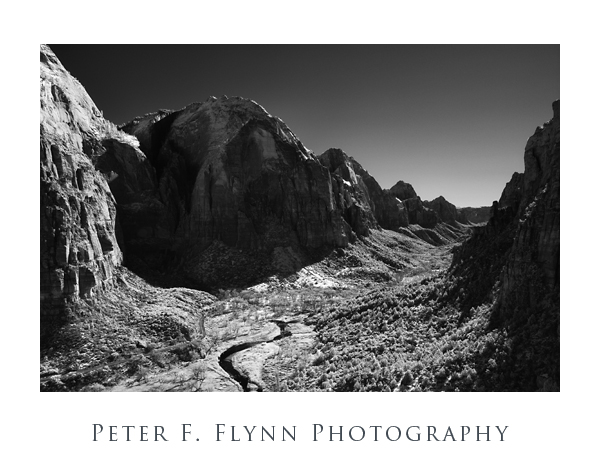 The image above, looking south down the canyon of
The image above, looking south down the canyon of 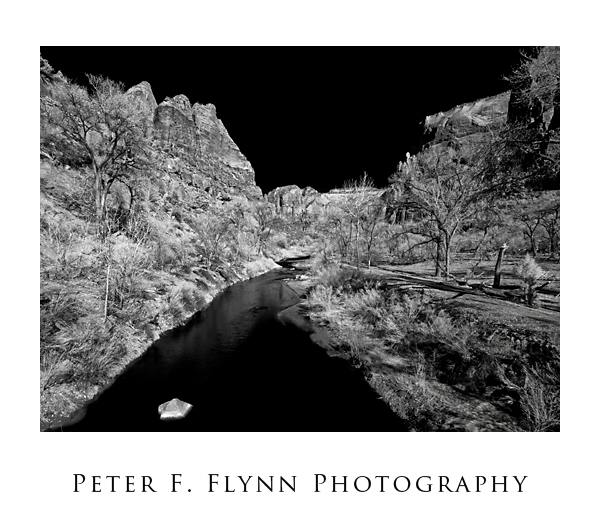 The image above of the Virgin River in Zion Canyon NP was recorded on January 18, 2009 at around 13:50 MST using the Nikon D200 converted to IR capture (see below) and the AF-S DX Zoom NIKKOR 12-24mm f/4 IF-ED lens at 18mm. Exposure was f/16 at 1/40s, ISO 100.
The image above of the Virgin River in Zion Canyon NP was recorded on January 18, 2009 at around 13:50 MST using the Nikon D200 converted to IR capture (see below) and the AF-S DX Zoom NIKKOR 12-24mm f/4 IF-ED lens at 18mm. Exposure was f/16 at 1/40s, ISO 100.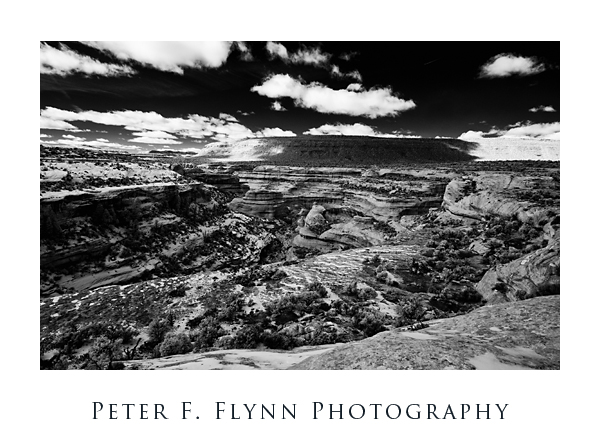 The image above of Sipapu Bridge in
The image above of Sipapu Bridge in 